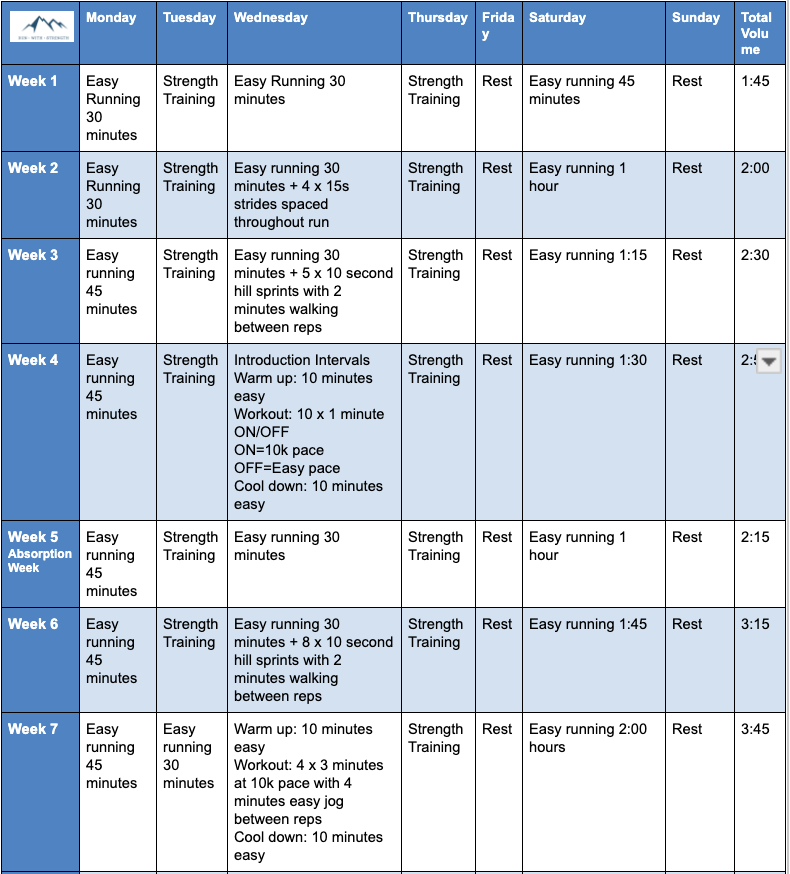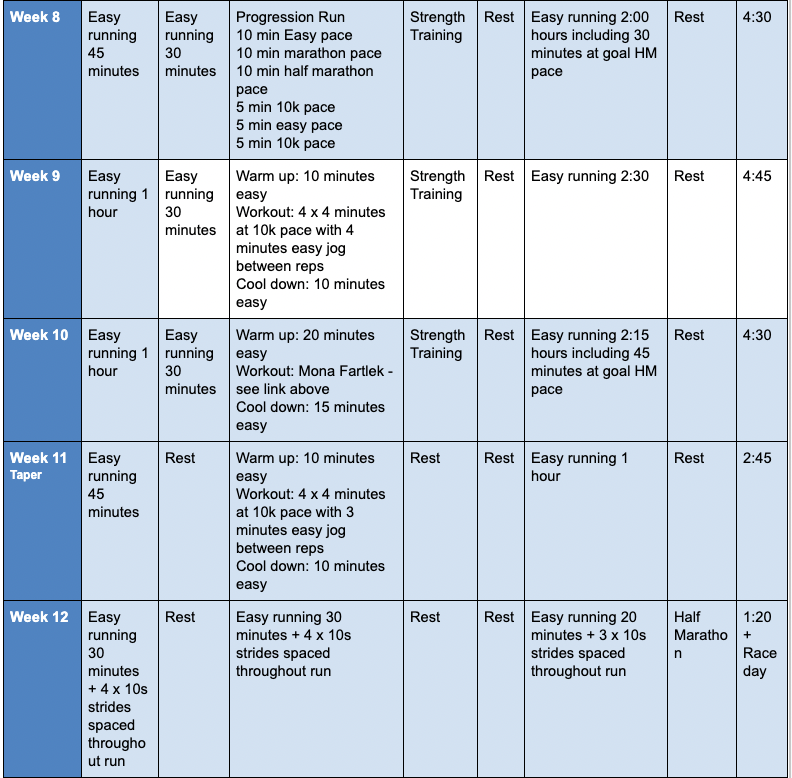The half marathon is the first major milestone for beginner runners. The half marathon distance is recognised as being one of the most aerobically challenging. For most new runners completing a marathon, your legs will go before your aerobic system. Conversely a half marathon is a true test of your aerobic fitness. Our 12 week half marathon training program is designed to get you over the line in your goal time and without any injuries.
This program is written by Sam Allman, Physiotherapist and Level 2 Athletics Australia Qualified Run Coach. Work with Sam via Online Run Coaching, Online Rehab Coaching or Online Running Physiotherapy Appointments.
The half marathon distance is the perfect challenge for a new runner who has mastered the local park run 5km distance. If you are so new to running that you haven’t put your foot out the door yet, try our 10km beginner running program before you tackle our half marathon program.
This program includes several types of workouts which we will explain below.
1. Low Intensity Runs
Low intensity runs will make up approximately 80% of your running training. These are your every day runs, which should be completed at “Conversational Pace”. That is, an easy pace where you can maintain a conversation without hyperventilating or blurting out each word. These are the “Zone 2” runs everyone is talking about.

2. Strides and Hill Sprints
What are strides? Strides are a short burst of speed at approximately 80-90% max effort (with 100% being a full sprint). This pace should feel hard, but you should not be doing a maximal sprint. Avoid forcing your strides and taking very long steps, think quick fast feet when running your strides.
Hill Sprints are included in a few weeks. 10 second uphill sprints (on a hill > 10% incline) are a great way to build power and improve running form.
Strides and Hill sprints help build running form as well as getting your body used moving fast. Strides are also helpful and priming your body to run fast, this is why we include them in the final week of your program.
3. Intervals
Interval sessions start with short 1 minute intervals and build to 4 minute intervals at 10k pace. These are considered a VO2 max workout, aimed at improving your high end aerobic capacity.
4. Strength Training
Strength training sessions are key to injury prevention and for improving running economy (how efficient you run). Focus your exercises on strengthening quads, calves, hamstrings, gluteals and the hip muscles. This will help improve running performance and reduce injury risk! Read more on strength training here.
These sessions should slowly increase the weight and/or difficulty each week. Strength exercises can be done in a gym or at home. We have included 2 x weekly strength sessions for the first 6 week, moving to 1 x weekly until taper week.
12 Week Half Marathon Training Plan
As physiotherapists and running coaches, we are fully aware that 80-90% of all runners have at least 1 running injury every year. This 12 week half marathon training program may appear different to other generic training programs you see online. That is because we aim to create strong, robust and injury free runners rather than just praying and hoping for no injuries. To assist in injury prevention, we have included adequate rest days, strength sessions and hill sessions.
You may notice that week 6 has less volume of running than week 5. This is because week 6 is a rest week. 12 weeks of training load is a lot for any human. So having a rest week allows your body to recover and adapt. It also helps reduce the risk of injury by reducing cumulative load.
You will reach peak running volume at week 9. After this, the taper period begins and we reduce the total volume each week. This will allow your body to recover and adapt, leaving you in peak condition for your first half marathon!


It is impossible to tailor this program exactly to your needs as we have never met you. We always recommend using a running coach if you are serious about giving an event your best shot. If you are looking for this tailored coaching experience, head to our ONLINE COACHING PAGE for more information